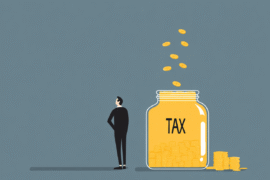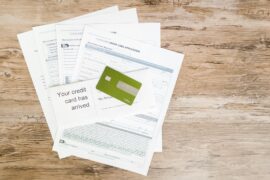This article may contain references to products or services from one or more of our advertisers or partners. We may receive compensation when you click on links to those products or services. Nonetheless, our opinions are our own.
The information presented in this article is accurate to the best of our knowledge at the time of publication. However, information is subject to change, and no guarantees are made about the continued accuracy or completeness of this content after its publication date.
You might have heard the recent news about a key banking brand filing for Chapter 11 bankruptcy—an unexpected twist that has sent ripples through the financial sector. Not often does a prominent player in the banking industry have to navigate the complexities of a bankruptcy filing, and this event raises numerous questions about the state of the economy and the overall banking system. We’ll dive into the details of the situation, exploring the reasons behind this sudden move, its potential impacts on customers and investors, and what it could signal for the future of banking. As you read on, consider how this meaningful event may affect your viewpoint on the financial institutions you trust.
- Understanding the Shock of Chapter 11 Bankruptcy and Its Implications for You
- What Led to This Key Banking Brand’s Bankruptcy: A Closer Look at Market Trends
- Your Rights and Options as a Customer When a Bank Files for Bankruptcy
- How to Safeguard Your Savings and Investments in Uncertain Times
- Practical Steps to Reassess Your Financial Strategy Following a Bankruptcy
- Looking Ahead: What the Future Holds for Banking and Your Financial Health
- Conclusion: Looking Ahead After a Banking Shakeup
- Frequently Asked Questions
- What led to the unexpected Chapter 11 bankruptcy of the key banking brand?
- What does Chapter 11 bankruptcy mean for the bank and its customers?
- How will this bankruptcy affect the bank’s employees?
- What steps is the bank taking to recover from this bankruptcy?
- What implications does this bankruptcy have for the broader banking industry?
- What should customers do if they have concerns about their accounts?
- Recommended Reads
Understanding the Shock of Chapter 11 Bankruptcy and Its Implications for You
Experiencing the shockwaves of a well-known banking brand filing for Chapter 11 bankruptcy can leave you unsettled, especially if you have accounts or investments tied to that institution. This legal procedure typically allows companies to restructure their debts and provides a pathway to reclaim financial stability. However, it raises critical questions for you as a customer or investor. You’ll want to understand how this bankruptcy affects your assets, access to funds, and the overall stability of your financial choices.
As you navigate this unexpected turn of events, keep these considerations in mind:
Account Security: Ensure that your deposits are protected under FDIC insurance limits, which typically cover up to $250,000 per depositor per insured bank.
Financial Transactions: Delays in processing withdrawals or transfers may occur. It’s wise to avoid significant or emergency transactions until stability returns.
Investment Exposure: Assess any investments you hold in the brand and determine if they will be affected by the restructuring process.
Summary Table of Key Actions:
| Action | Recommendation |
|---|---|
| Review Accounts | Check balances and verify FDIC coverage. |
| Stay Informed | Follow updates from reliable financial news sources. |
| Explore Alternatives | Consider switching to another bank if necessary. |
Being proactive and informed can better protect your financial well-being amidst uncertainty.
What Led to This Key Banking Brand’s Bankruptcy: A Closer Look at Market Trends
A once-revered banking brand’s recent Chapter 11 bankruptcy filing has undoubtedly sent shockwaves through the financial community. As you look closer, you’ll notice that a confluence of market trends substantially contributed to this unforeseen downturn:
Economic Instability: Fluctuating interest rates and rising inflation have pressured many consumers’ ability to repay loans.
Increased Competition: Fintech companies have emerged, providing more agile and consumer-friendly banking solutions, drawing away a loyal customer base.
Regulatory Strain: Heightened compliance costs due to shifting regulations have put additional financial burdens on traditional banking operations.
Technological Investment: This banking brand’s failure to adequately invest in digital transformation resulted in a delay in offering seamless online services, which frustrated tech-savvy customers.
Moreover, it’s essential to consider the bank’s internal management decisions, which may have overlooked warning signs in customer behavior and preferences. For instance, the lack of engagement in promoting financial literacy led to a disconnect between the brand’s offerings and the evolving needs of its customer base, triggering a decline in trust and satisfaction. All of these factors, when brought together, paint a concerning picture that emphasizes the importance of adaptability in the fast-paced world of finance.
Key Factor Impact Table:
| Key Factor | Impact |
|---|---|
| Economic Instability | Reduction in loan repayments |
| Increased Competition | Loss of market share |
| Regulatory Strain | Higher operational costs |
| Technological Investment | Customer dissatisfaction |
Your Rights and Options as a Customer When a Bank Files for Bankruptcy
A bank undergoing Chapter 11 bankruptcy can feel unsettling, but you have rights and options to safeguard your financial interests. Firstly, it’s crucial to comprehend that the FDIC (Federal Deposit Insurance Corporation) typically insures your deposits up to certain limits. This means you won’t lose your insured deposits if your bank goes under. However, you should always check the current limits and ensure your accounts are within them to maximize security.
As a customer, consider taking the following steps:
Stay Informed: Monitor the bank’s communications and any official announcements related to the bankruptcy proceedings.
Review Your Accounts: Assess your current accounts and financial products. If you hold any loans or mortgages, understanding their status is crucial.
Plan Your Next Move: Decide if you want to transfer your accounts to a more stable institution. Compare interest rates, fees, and customer service ratings before switching.
If your financial connection with the bank is more complex, such as investments or retirement accounts, consult a financial advisor to explore your options. They can help you navigate the potential impacts on your investments and suggest ways to restructure your financial portfolio for greater stability moving forward.
Summary Table:
| Action | Advice |
|---|---|
| Check FDIC Coverage | Ensure your funds are within insured limits. |
| Monitor Communications | Regularly check for updates from the bank or regulatory bodies. |
| Consider Alternative Banks | Research and compare other banking options for safety and service. |
Voted "Best Overall Budgeting App" by Forbes and WSJ
Monarch Money helps you budget, track spending, set goals, and plan your financial future—all in one app.
Get 50% OFF your first year with code MONARCHVIP
How to Safeguard Your Savings and Investments in Uncertain Times
In these unpredictable financial times, safeguarding your savings and investments requires proactive measures and a clear strategy. Start by diversifying your portfolio to avoid concentrating all your investments in one area. Spreading your investments across various asset classes such as stocks, bonds, real estate, and alternative investments like commodities or cryptocurrencies can achieve this. Here are essential tips to consider:
Emergency Fund: Maintain an emergency fund that covers at least 3–6 months of living expenses. This fund should be easily accessible and kept in a high-yield savings account.
Risk Assessment: Regularly assess your risk tolerance based on your current financial situation and future goals. This process will help you make informed decisions about where to allocate your resources.
Stay Informed: Follow financial news and trends to adapt your strategy when economic conditions shift.
Seek Professional Guidance: Consult a financial advisor for tailored advice, especially during turbulent economic times.
Additionally, consistently monitoring your financial health is essential. Tracking your investments and savings can reveal patterns or areas for improvement. Use tools or apps that enable you to monitor the performance of your portfolio.
Investment Overview Table:
| Investment Type | Amount Invested | Current Value | Notes |
|---|---|---|---|
| Stocks | $5,000 | $6,500 | Strong performer |
| Bonds | $3,000 | $2,800 | Stable but low yield |
| Real Estate | $10,000 | $12,000 | Long-term hold |
These steps will help you navigate challenging economic landscapes and protect your financial future. Remember, it’s about being informed, adaptable, and prepared.
Practical Steps to Reassess Your Financial Strategy Following a Bankruptcy
In the wake of unexpected financial upheaval, taking a step back and reassessing your entire economic strategy is essential. Start by evaluating your current budget to understand where your money is going. Consider these action points:
Review and Adjust Expenses: Identify nonessential expenses that can be cut or minimized.
Calculate Your Debt-to-Income Ratio: This step will help you understand how much of your income goes toward debt repayment.
Establish an Emergency Fund: Even a small savings cushion can provide security in case of future uncertainties.
Next, focus on rebuilding your credit and establishing new banking relationships. It’s a beneficial idea to set small, attainable goals:
| Goal | Timeframe |
|---|---|
| Pay down high-interest debt | Next 6 months |
| Open a new secured credit card | Immediately |
| Build your credit score to 650+ | Within 1 year |
Adopting a proactive mindset will keep you on track as you navigate your financial recovery. Set clear milestones for yourself, and don’t hesitate to seek guidance when needed. Remember, every small change adds up to a more solid financial foundation.
Looking Ahead: What the Future Holds for Banking and Your Financial Health
The recent Chapter 11 bankruptcy filing of a major banking brand has sparked conversations about the future landscape of the financial sector and the implications it holds for your financial health. As you navigate this uncertain terrain, staying informed and adaptable is crucial. Here are some key factors to consider:
Increased Focus on Digital Solutions: With traditional banking models in flux, expect a surge in digital banking innovations. These advancements will likely cater to your needs for convenience and efficiency.
Stronger Regulatory Frameworks: In the wake of this bankruptcy, regulators may tighten oversight, aiming to protect consumers like you and ensure the financial system’s stability.
Diverse Financial Options: As the market evolves, your choices in banking services will expand. More niche players may offer tailored products that suit your financial goals.
Future Trend Table
| Trend | Impact on You |
|---|---|
| Emergence of Fintech Solutions | Greater access to loans, investments, and savings tools |
| Changes in Interest Rates | Potential fluctuations affecting savings and loan costs |
| Customer-Centric Services | More personalized banking experiences |
As you reflect on these changes, remember that your financial well-being hinges on staying proactive and informed. Embracing new banking solutions and adjusting your financial strategies can better equip you for whatever lies ahead.
Conclusion: Looking Ahead After a Banking Shakeup
The sudden Chapter 11 filing of [Bank Name] serves as a wake-up call for customers and investors. In an era of rising interest rates, increased regulatory pressure, and growing fintech competition, even long-established banks are not immune to financial instability.
As a customer or investor, staying proactive, diversifying your accounts, and closely monitoring your financial institutions are essential. Use this moment to reassess your portfolio, explore other banking relationships, and consult with financial professionals. By staying informed and adaptable, you can navigate the changing economic landscape with greater confidence and stability.
Frequently Asked Questions
What led to the unexpected Chapter 11 bankruptcy of the key banking brand?
The key banking brand faced a combination of factors, including rising interest rates, heightened regulatory scrutiny, and significant losses in its investment portfolio. These challenges overwhelmed the company’s liquidity and profitability, ultimately pushing it to file for Chapter 11 bankruptcy protection.
What does Chapter 11 bankruptcy mean for the bank and its customers?
Chapter 11 bankruptcy allows the bank to restructure its debts while continuing operations. This means that customers’ accounts and services may remain intact during the restructuring process. Still, they should be aware of potential temporary disruptions or changes as the bank reorganizes its operations.
How will this bankruptcy affect the bank’s employees?
Employees may face uncertainty as the bank undergoes restructuring. While the intention of a Chapter 11 filing is to allow the company to regain stability, layoffs, changes in management, or shifts in business strategy could impact job security.
What steps is the bank taking to recover from this bankruptcy?
The bank is working with financial advisors to develop a comprehensive restructuring plan. This plan includes cost-cutting measures, potential asset sales, and a focus on core business operations to regain economic stability and operational efficiency.
What implications does this bankruptcy have for the broader banking industry?
The unexpected bankruptcy serves as a warning sign to the broader banking industry, indicating potential vulnerabilities in financial institutions facing economic headwinds. It could lead to increased scrutiny from regulators and reevaluating risk management practices across the sector.
What should customers do if they have concerns about their accounts?
Customers should stay informed by monitoring bank communications regarding any changes to their accounts. It is advisable to reach out to customer service representatives for specific inquiries and monitor news updates related to the bank’s restructuring efforts.

Reviewed and edited by Albert Fang.
See a typo or want to suggest an edit/revision to the content? Use the contact us form to provide feedback.
At FangWallet, we value editorial integrity and open collaboration in curating quality content for readers to enjoy. Much appreciated for the assist.
Did you like our article and find it insightful? We encourage sharing the article link with family and friends to benefit as well - better yet, sharing on social media. Thank you for the support! 🍉
Article Title: Major Bank Files Surprise Chapter 11 Bankruptcy
https://fangwallet.com/2025/05/03/major-bank-files-surprise-chapter-11-bankruptcy/The FangWallet Promise
FangWallet is an editorially independent resource - founded on breaking down challenging financial concepts for anyone to understand since 2014. While we adhere to editorial integrity, note that this post may contain references to products from our partners.
The FangWallet promise is always to have your best interest in mind and be transparent and honest about the financial picture.
Become an Insider

Subscribe to get a free daily budget planner printable to help get your money on track!
Make passive money the right way. No spam.
Editorial Disclaimer: The editorial content on this page is not provided by any of the companies mentioned. The opinions expressed here are the author's alone.
The content of this website is for informational purposes only and does not represent investment advice, or an offer or solicitation to buy or sell any security, investment, or product. Investors are encouraged to do their own due diligence, and, if necessary, consult professional advising before making any investment decisions. Investing involves a high degree of risk, and financial losses may occur including the potential loss of principal.
Source Citation References:
+ Inspo
There are no additional citations or references to note for this article at this time.












































